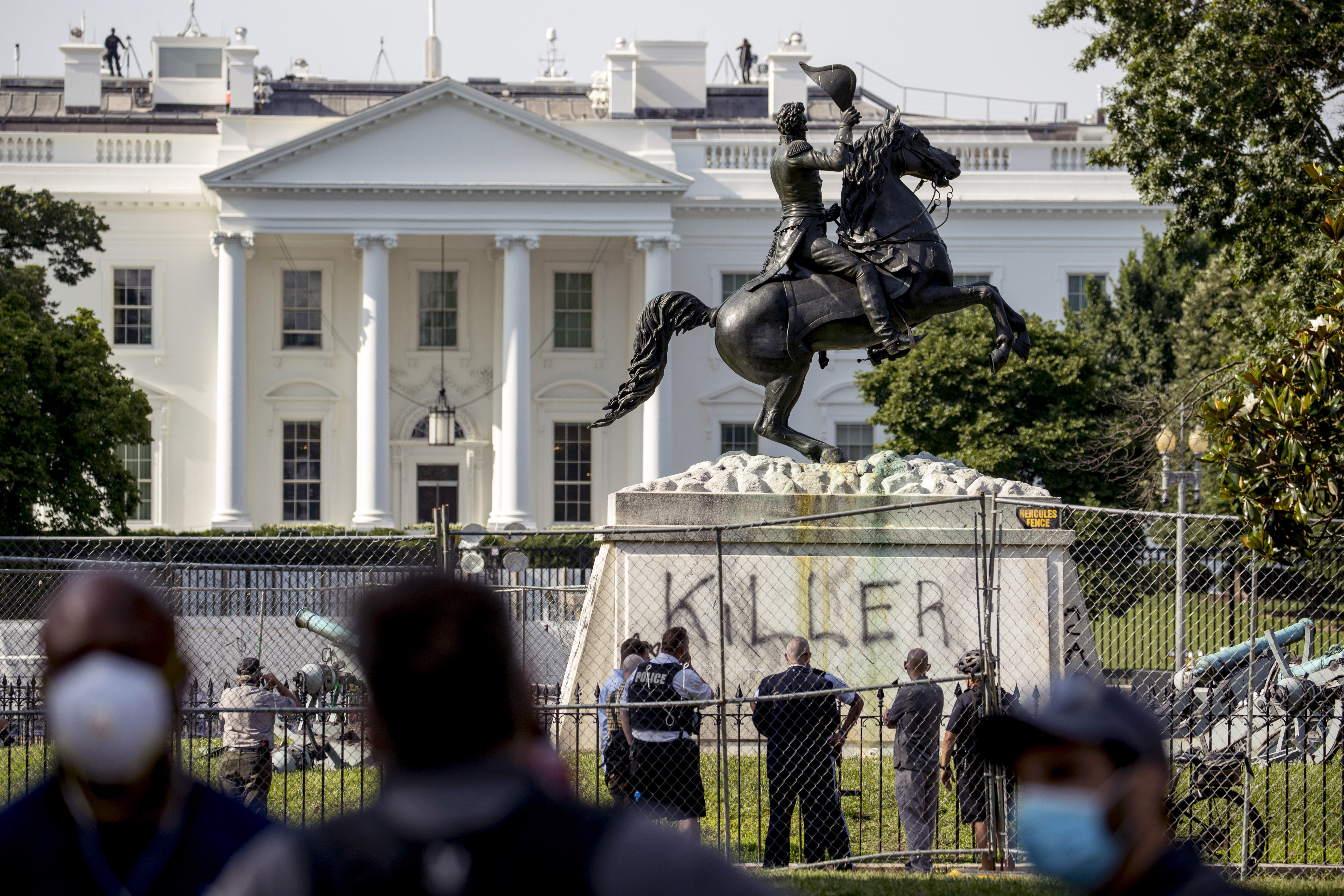Protesters threw ropes over a statue of President Andrew Jackson near the White House on Monday night and tried to pull it down, in the latest attempt to remove memorials of marred historical figures, including Confederate leaders and Christopher Columbus.
Police officers with riot shields and pepper spray confronted the demonstrators in Lafayette Park, leading to some tense encounters shared on social media. The statue of Jackson on horseback ultimately remained upright, unlike dozens that have been toppled or taken down in recent weeks as the nation grapples with systemic racism.
Jackson, the seventh President, owned slaves and put into place policies that forced Native Americans from their land, with some 15,000 people dying on the Trail of Tears.
President Trump, who had a portrait of Jackson hung in the Oval Office shortly after his inauguration, condemned “the disgraceful vandalism” of “the magnificent Statue” in a tweet late on Monday night.
Several other presidential statues have recently been targeted.
Protesters in Portland, Oregon, toppled a statue of George Washington, and a statue of Ulysses S. Grant was pulled to the ground in San Francisco. The American Museum of Natural History in New York announced it would take down a statue of Theodore Roosevelt, and some City Council members want a statue of Thomas Jefferson removed from City Hall.
The dismantling of contentious statues began with a focus on those honouring members of the Confederacy. For weeks, protesters have converged on a statue of the commander Robert E. Lee in Richmond, Virginia, one of the most prominent on the city’s Monument Avenue.
On Monday, state officials announced that the Lee statue, which governor Ralph Northam has been trying to remove, would be closed to the public from sunset to sunrise. Officials outlined a list of safety concerns, including vandalism, trespassing, littering and public urination.
According to the state’s order, police officers will “encourage voluntary compliance” before taking any enforcement action. But it was unclear whether protesters would respect the closure order.
Mel Leonor, a reporter for The Richmond Times-Dispatch, wrote on Twitter that a crowd of protesters cheered on Monday when one suggested that they meet at the monument after 8pm.
Trump threat
Trump and his fellow Republicans in Congress on Tuesday angrily decried efforts to remove statues and other memorials that activists consider racist.
Trump early on Tuesday announced an authorisation “effective immediately” to arrest anyone caught destroying or vandalsing a commemoration to a former member of the armed services on federal land, citing the Veterans Memorial Act, which has been law for 17 years.
He first threatened arrest late on Monday night when protesters tried and failed to topple a statue of former President Andrew Jackson near the White House.
Protesters also declared a Black House Autonomous Zone across the street from the White House in front of St John’s Church, taking over Black Lives Matter Plaza. They spray painted “BHAZ” on columns in front of the church, which had a small basement fire during earlier protests.
“Perpetrators must be prosecuted. These senseless attacks must be stopped,” Kevin McCarthy, the top Republican in the US House of Representatives, said on Twitter.
Many of the statues and monuments targeted by crowds in recent weeks pay homage to the rebel Confederacy from the nation’s Civil War. Democrats and other critics say such symbols wrongly honour those who perpetuated slavery.
Calls to take them down follow a wave of protests after the May 25 death of George Floyd, an unarmed Black man killed in police custody in Minneapolis, that has sparked ongoing demonstrations.











